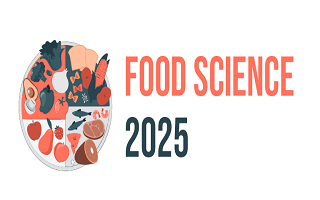2nd International Conference on
Food Science and Technology
September 19-20, 2025 | Online
Food Science 2025

Agricultural Research Service, USA
Abstract:
Six hundred million cases of disease and roughly 420,000 deaths occur globally each year due to foodborne pathogens. Current methods to screen and identify pathogens in cattle, poultry, and swine products include immuno-based techniques (e.g., immunoassay integrated biosensors), molecular methods (e.g., DNA hybridization and PCR assays), and traditional culturing. Current detection methods employed by the United States Department of Agriculture’s Food Safety and Inspection Service require several days to identify prominent foodborne pathogenic bacterial (e.g., at least 4 days for Shiga-toxin Producing E. coli or STEC and 6 days for Listeria monocytogenes ). Adoption of long-read, whole genome sequencing for food safety testing could significantly reduce the time needed for identification, but method development costs are currently high. Multiple criteria (e.g., accuracy, precision, rapidity, cost, robustness, etc.) are required for the acceptance of new analytical methods. This presentation will focus on elucidation of the minimum detectable level and quantification criteria associated with the application of nanopore-based, long-read sequencing using the MinION platform Oxford Nanopore Technologies) intended for fieldportable detection of foodborne bacterial pathogens. Results of in-silico and in-vitro research will demonstrate that although the sequencing technology may be proven to be accurate, relatively rapid, and portable, it currently is not practically capable of low level detection of “zero tolerance,” food-associated bacteria without the co-application of culture enrichment. However, the technology does hold promise for quantification of targeted bacteria in the presence of significantly higher amounts of background microbial flora.
Biography:
Andrew completed his PhD in Chemistry (Biochemistry emphasis) in 1993 from San Diego State University and the University of California, San Diego and postdoctoral studies with the United States Department of Agriculture (USDA). He serves as a Research Leader for the Characterization and Interventions for Foodborne Pathogens management unit at the Eastern Regional Research Center (Wyndmoor, Pennsylvania) for the Agricultural Research Service of the USDA. He has published more than 90 papers in reputed journals and currently serves as an editorial board member for MDPI’s “Foods
